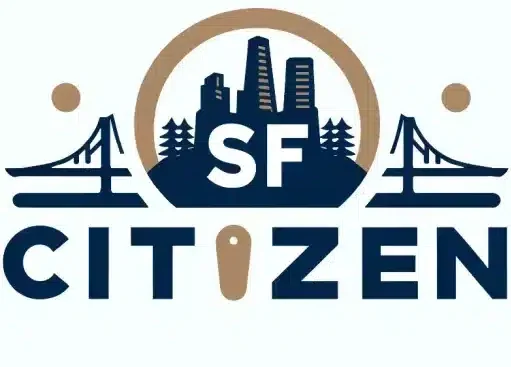Union Square has been the heart of San Francisco since the city’s early days, serving as a gathering place, cultural hub, and a symbol of the city’s resilience. This 2.6-acre public plaza has evolved from a sandy campground during the Gold Rush era to a modern, mixed-use space that showcases the best of San Francisco’s social scene, entertainment, and retail offerings.
In This Article
Key Points
- Union Square is a vibrant social district and cultural hub in the heart of San Francisco
- The tech industry and higher education have significantly influenced the area’s development
- Union Square has evolved from a historic district to a modern mixed-use space
The Historical Significance of Union Square
Union Square’s history dates back to the early days of San Francisco. During the Gold Rush, the area served as a campground for the influx of prospectors seeking their fortunes. The square was officially deeded to the city in 1850 by Colonel John Geary, who later became San Francisco’s first American mayor.
The devastating earthquake and fire of 1906 left much of San Francisco in ruins, including the area surrounding Union Square. However, the iconic St. Francis Hotel, which had opened just two years prior, survived the disaster and played a crucial role in the rebuilding efforts. The hotel served as a temporary campground for guests and residents, showcasing the resilience and spirit of the city.
Union Square as a Social and Cultural Hub
As a public square, Union Square has long been a center for community engagement and social activities. The Victorian-inspired landscaping and English garden tradition create an inviting atmosphere for locals and visitors alike. The square has hosted countless events over the years, from political rallies and memorial services to art shows and outdoor fashion shows.
Union Square is also known for its vibrant nightlife and entertainment offerings. The area is home to numerous restaurants, bars, and clubs, making it a popular destination for those seeking a night out on the town. The square’s central location and proximity to public transportation make it easily accessible for both locals and tourists.
The Evolution of Union Square
In recent years, Union Square has undergone significant changes driven by the growth of the tech industry and the development of mixed-use spaces. The area has seen an increase in office-to-residential conversions, bringing a new demographic of residents to the neighborhood. Higher education institutions have also established campuses in the area, further contributing to the diverse and dynamic community.
The concept of the “urban room” has become increasingly relevant to Union Square, as the plaza serves as a gathering place and a focal point for the surrounding neighborhood. Preservation efforts have helped maintain the area’s historic character, with notable buildings like the Calvary Presbyterian Church serving as architectural landmarks.
Union Square’s Contribution to San Francisco Tourism
As a premier shopping destination, Union Square plays a vital role in San Francisco’s tourism industry. The area is home to numerous high-end retailers, department stores, and boutiques, attracting visitors from around the world. Luxury accommodations, such as the St. Francis Hotel and the Westin St. Francis, cater to the needs of discerning travelers.
The square’s central location makes it an ideal starting point for exploring the city’s many attractions. Visitors can easily access public transportation from Union Square, connecting them to popular destinations like Fisherman’s Wharf, Golden Gate Park, and the Museum of Modern Art.
Community and Lifestyle in Union Square
Union Square is more than just a tourist destination; it is a vibrant community with a rich history and a unique lifestyle. The square has long been a gathering place for locals, hosting community events and social activities. In the past, Union Square was even home to sand-lot baseball games, a testament to its role as a center for recreation and leisure.
The development of mixed-use spaces has brought a new dimension to life in Union Square. Residents now have access to a wide range of amenities, from grocery stores and fitness centers to coworking spaces and cultural venues. This blend of residential, commercial, and recreational spaces has created a dynamic and engaging community in the heart of the city.
Union Square’s Future Prospects
As San Francisco continues to evolve, Union Square is poised to play an increasingly important role in the city’s future. The ongoing influence of the tech industry and higher education institutions will likely drive further revitalization and development in the area. The square’s cultural offerings and nightlife scene are also expected to expand and adapt to the changing needs and preferences of the community.
However, Union Square also faces challenges, such as rising housing costs and the need to balance historic preservation with modern development. The community and city leaders will need to work together to ensure that Union Square remains a vibrant, inclusive, and sustainable neighborhood for generations to come.
FAQ
What makes Union Square a significant cultural hub in San Francisco?
Union Square has long been a center for community engagement, hosting a wide range of events, from political rallies and memorial services to art shows and outdoor fashion shows. The square’s Victorian-inspired landscaping and central location make it an ideal gathering place for locals and visitors alike.
How has the tech industry influenced the evolution of Union Square?
The growth of the tech industry has driven significant changes in Union Square, including an increase in office-to-residential conversions and the development of mixed-use spaces. This has brought a new demographic of residents to the area and has contributed to the creation of a dynamic and engaging community.
What are some of the key historical events that have shaped Union Square?
Union Square has been shaped by several key events, including the Gold Rush, when the area served as a campground for prospectors, and the earthquake and fire of 1906, which devastated much of the surrounding neighborhood. The St. Francis Hotel, which survived the disaster, played a crucial role in the rebuilding efforts.
How do mixed-use spaces contribute to the community in Union Square?
Mixed-use spaces in Union Square provide residents with access to a wide range of amenities, from grocery stores and fitness centers to coworking spaces and cultural venues. This blend of residential, commercial, and recreational spaces has created a dynamic and engaging community in the heart of the city.
What role does Union Square play in San Francisco’s tourism industry?
As a premier shopping destination and home to luxury accommodations, Union Square plays a vital role in San Francisco’s tourism industry. The square’s central location makes it an ideal starting point for exploring the city’s many attractions, and its high-end retailers and department stores attract visitors from around the world.

